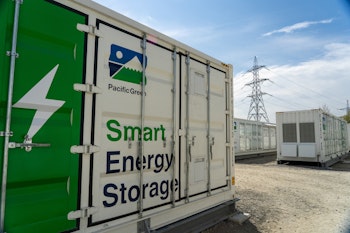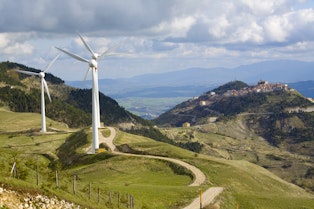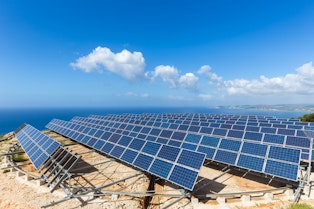Necks are craning to see just how big the energy storage market will grow as the industry spreads to keep pace with renewable energy rollouts.
Tamarindo’s Energy Storage Report notes that the European market will boom and worldwide installations are set to triple over the next five years, from $5.4 billion to $17.5 billion.
Appetite for energy storage is growing across the region, with Romania being one of the latest markets to push forward. In January the country introduced technical regulations for storage and in March the European Commission approved a €103 million support package for projects.

In Europe, the leading markets bar Germany are all islands or peninsulas, highlighting how storage is particularly important for territories with poor grid connections.
Battery technology also offers a solid hedge against market volatility as countries adopt increasing levels of intermittent wind and solar generation.
As the world focuses on reducing carbon emissions and adopting cleaner energy alternatives, the demand for energy storage is seen as a long-term, eco-friendly investment opportunity with a distinct two-way upside of lower charging costs and higher selling revenues.
And where in Europe is this opportunity greatest? Based on Energy Storage Report’s analysis, here are the region’s hottest half a dozen markets.
UK
After several years of booming installations, the UK is without doubt Europe’s most mature energy storage market in terms of revenue opportunities and is on course to have the largest installed capacity in Europe all the way through to 2030.
Last year, it witnessed the addition of 800 MWh of utility-scale energy storage capacity and analysts predict UK energy storage investments could top £15.7 billion by the end of the decade.
This significant influx of capital will lead to a combined energy reserve capable of powering 18 million homes for a year, says Rystad Energy. The analyst group forecasts a surge in battery storage capacity, hitting 24 GW by the end of the 2020s from 4.7GW today.
If so, the UK will account for nearly 9% of global battery storage capacity, making it the fourth largest market in the world after China, the US and Germany.

Recent developments include Quinbrook Infrastructure Partners commencing the construction of Cleve Hill Solar Park, with 150 MW of battery capacity, and Pacific Green moving forward with the 249 MW, 374 MWh Sheaf Energy Park project.
Italy
Italy was an early if rarely acknowledged leader in energy storage and the Italian market has more recently caught the eye of many energy investors, resulting in a surge in growth.
Forecasts from analyst group Wood McKenzie show Italy could install 12 GWh of new energy storage between now and 2031, with growth responding to major investments in solar power.
Last year, Italy accounted for little over 1% of European energy storage installations but the outlook this year is promising with Italian projects accounting for more than a fifth of all new capacity.
Enel Green Power began construction in April of battery storage systems with 1.6 GW of capacity within the country, with just under half the plants located in Sardinia.
Meanwhile Iberdrola Renovables Italia and Innovo Group have joined forces to create iCube Renewables, a venture aiming construct battery capacity tied to wind and solar plants. Innovo will be acting as project director.

Germany
Germany has historically been a leading European energy storage market, but only for residential batteries and mainly due to lavish government subsidies. Now it is catching up with other markets on grid-scale projects.
The German battery energy storage system industry is set to see a compound annual growth rate of 25% from 2022 to 2027. Data shows that within two years Germany will the second biggest share of lithium-ion battery manufacturing capacity, ousting the US.
At its Neurath and Hamm power plants, utility RWE is constructing of one of Germany’s largest battery storage facilities, with 690 lithium-ion battery blocks. The €140 million facility will have an expected capacity of 220 MW and 235 MWh.
Meanwhile ESS, a manufacturer of long-duration iron flow battery energy storage systems, and Lausitz Energie Verwaltungs Gmbh, a German energy provider, have joined forces to construct a 50 MW, 500 MWh iron flow battery system at the Boxberg Power Plant in Saxony, scheduled for 2027.
Spain
Already a European leader in pumped hydro storage, Spain will add 8 GWh of new capacity by 2031, with a growing focus on batteries.
In June 2023 the Spanish government revealed a plan to offer €160 million in grants to support the development of approximately 600 MW of new energy storage capacity, operational by 2026.
The government also initiated a €150 million scheme to enable new energy storage projects co-located with renewable generation. The state funding will cover up to 65% of the investment costs.
In March, Naturgy Energy Group announced it would be investing €117 million in eight battery storage projects across the country. These projects total 145 MW and 290 MWh.
Ireland
Ireland has emerged as an important force within Europe’s energy storage sector since 2018. The nation has 1.5 GW of storage projects in the planning stages, which are expected to provide sufficient power for approximately 750,000 households.
In June, specialist investment firm Adaptogen Capital confirmed that it had raised £207 million for its Adaptogen Battery Storage LP fund, focused on developing grid-scale and distributed storage assets in the UK and Ireland.

Greece
Until recently, Greece was unknown as an energy storage market. Its rise to prominence is driven by the growing weight of renewables in its energy system.
In 2019 the country published a National Energy and Climate Plan and this year a Ministerial Decision and Support Scheme introduced a robust investment plan. The government is targeting 28 GW of renewables by 2030, up from 19 GW previously.
The Greek regulatory authority for waste, energy and water has also announced the first in a series of battery storage auctions, seeking bids for an initial 400 MW in capacity.
Last November, Fotowatio Renewable Ventures acquired a majority interest in a 600 MW Greek battery storage portfolio with projects scheduled to go live this year.
Additionally, solar fund NextPower III ESG has acquired six utility-scale solar PV projects totalling 132 MW, as well as a majority share in six battery storage projects totalling 400 MW.
Publish date: 31 August, 2023